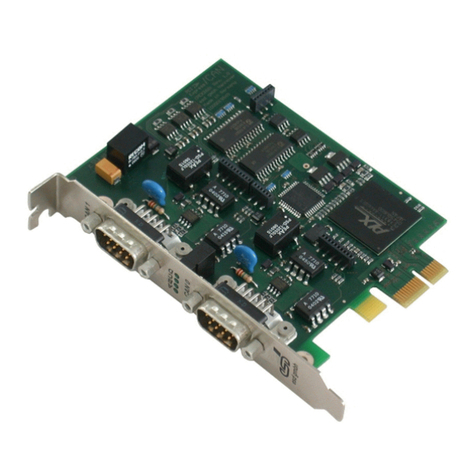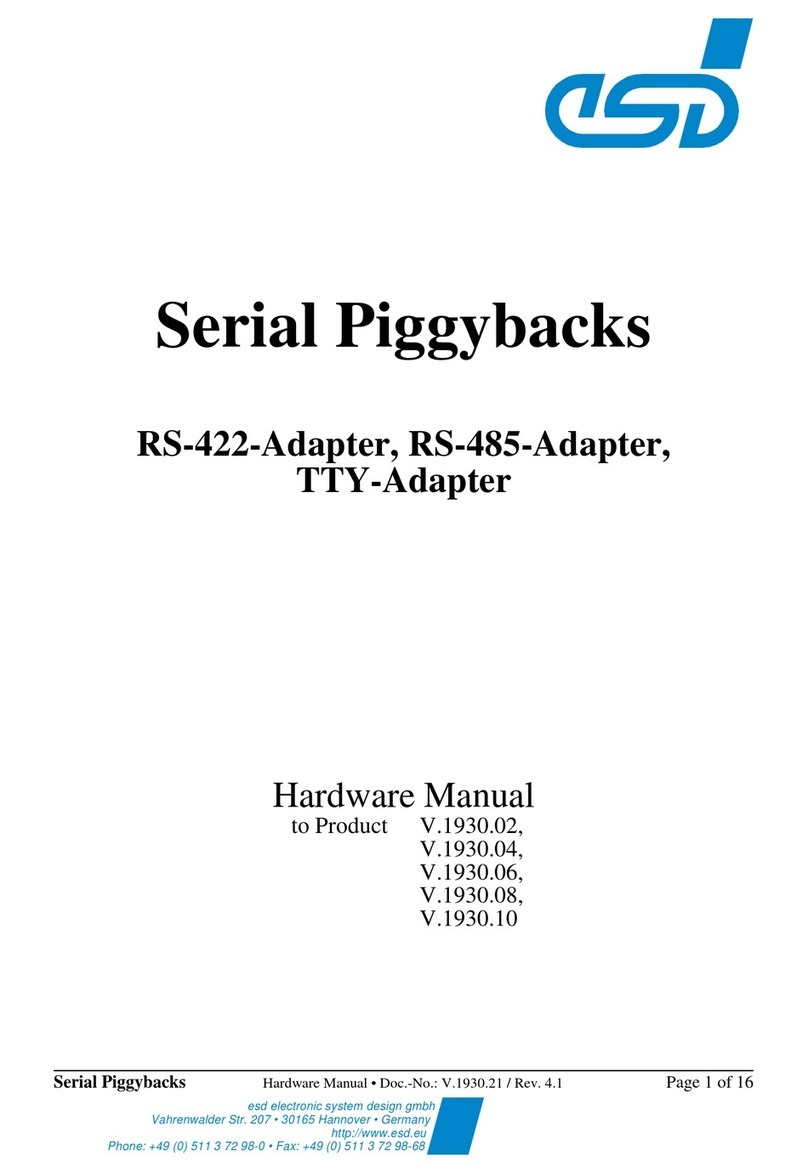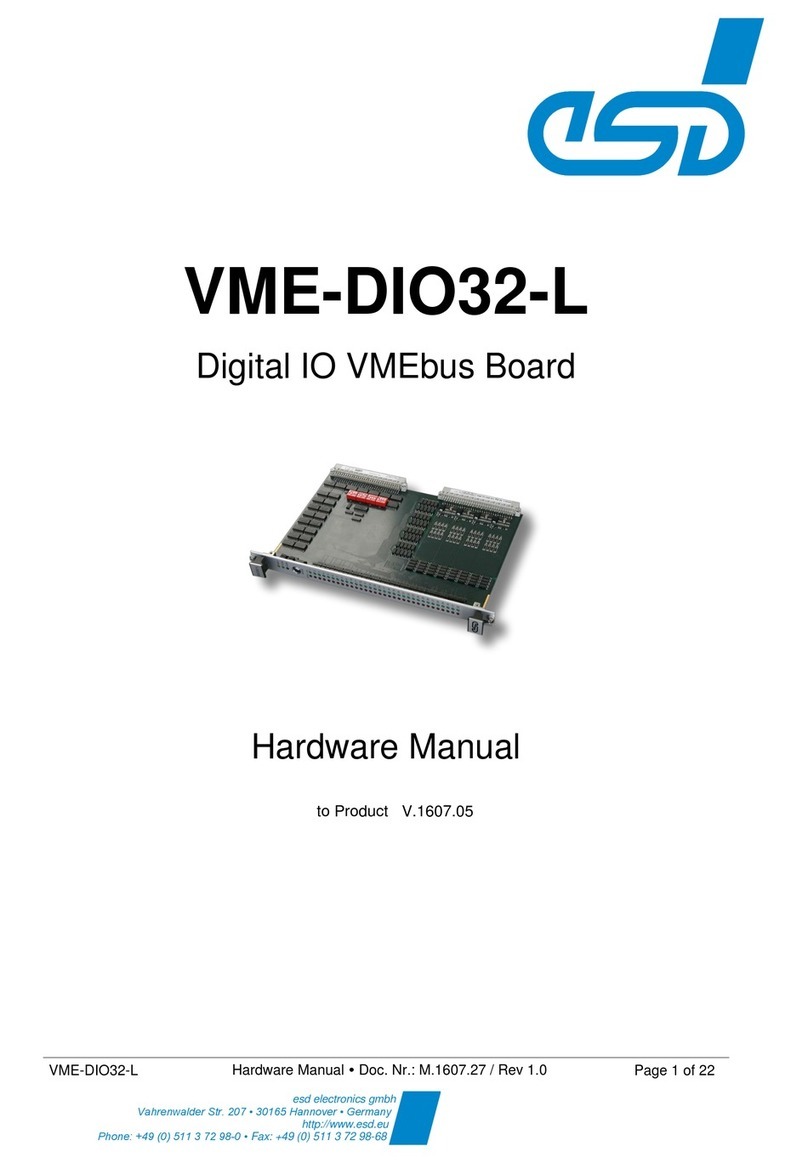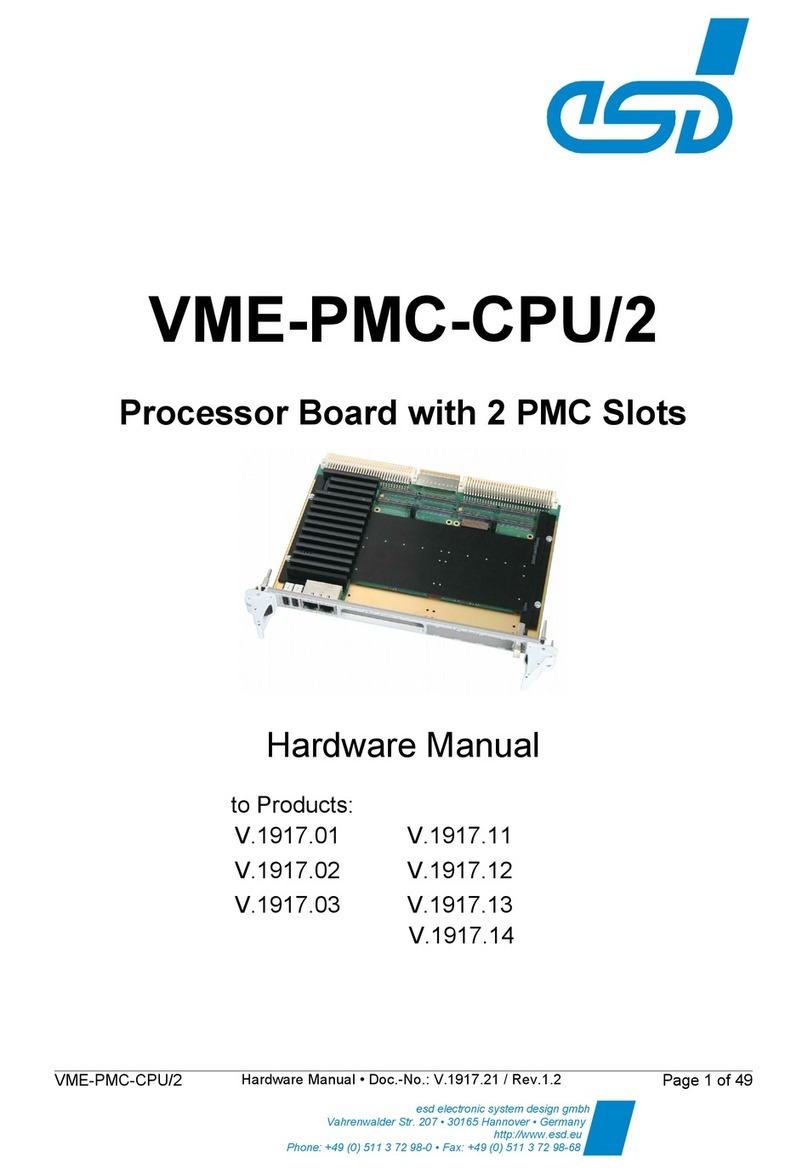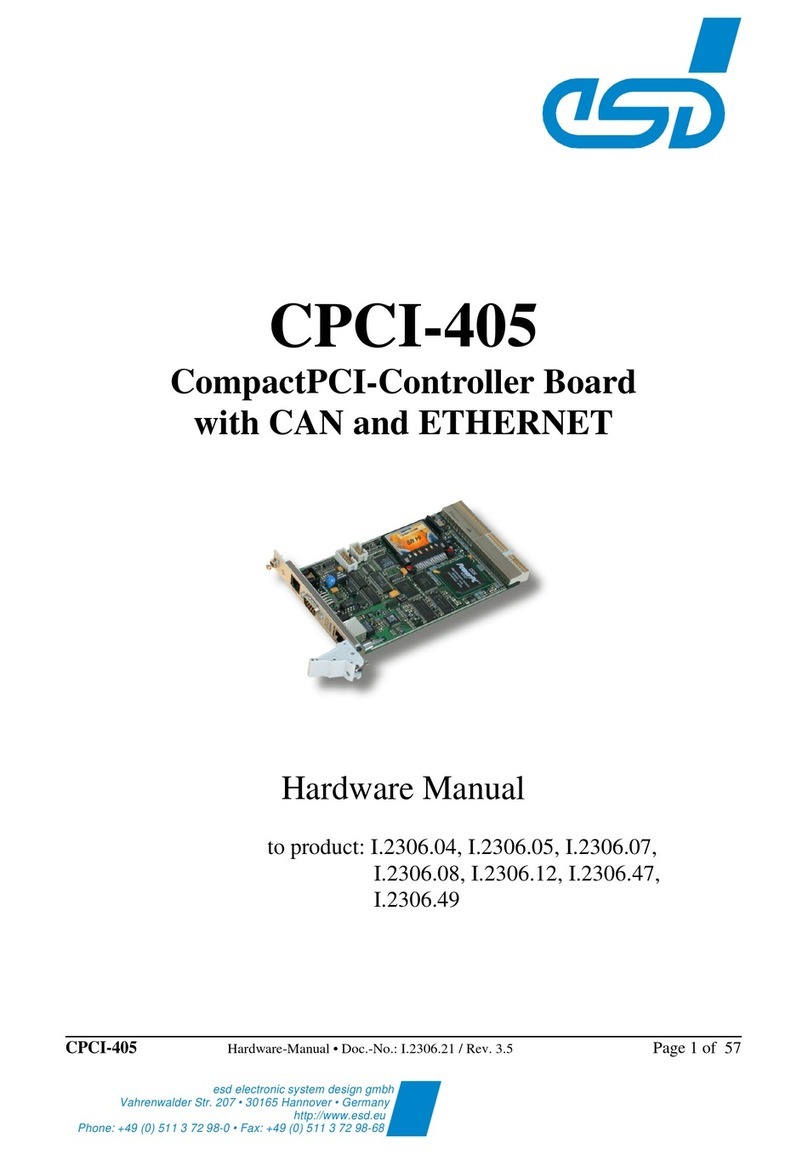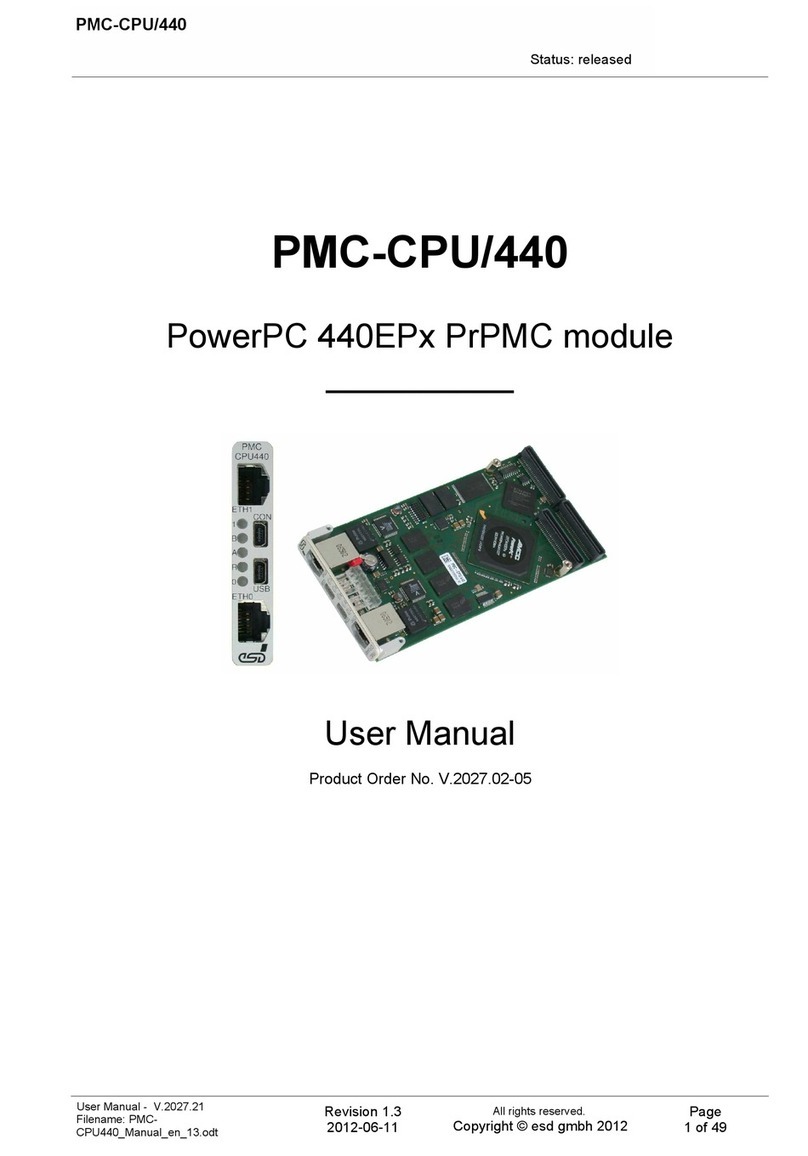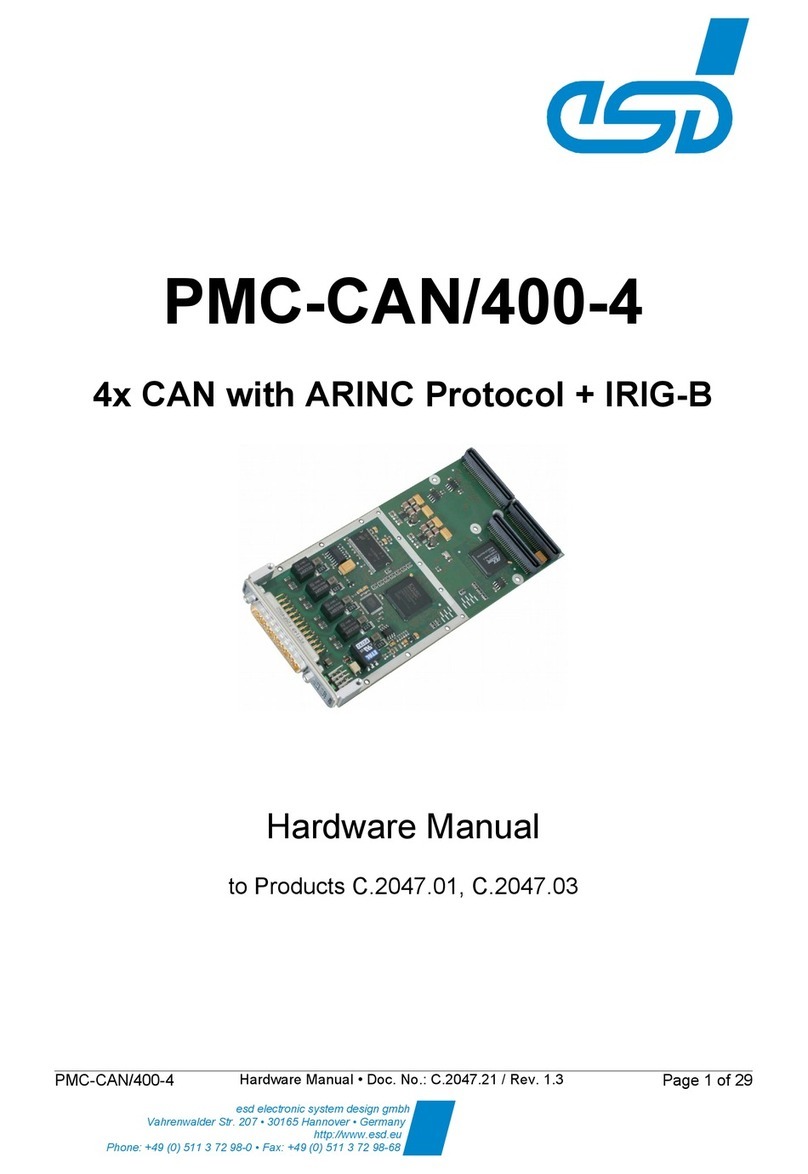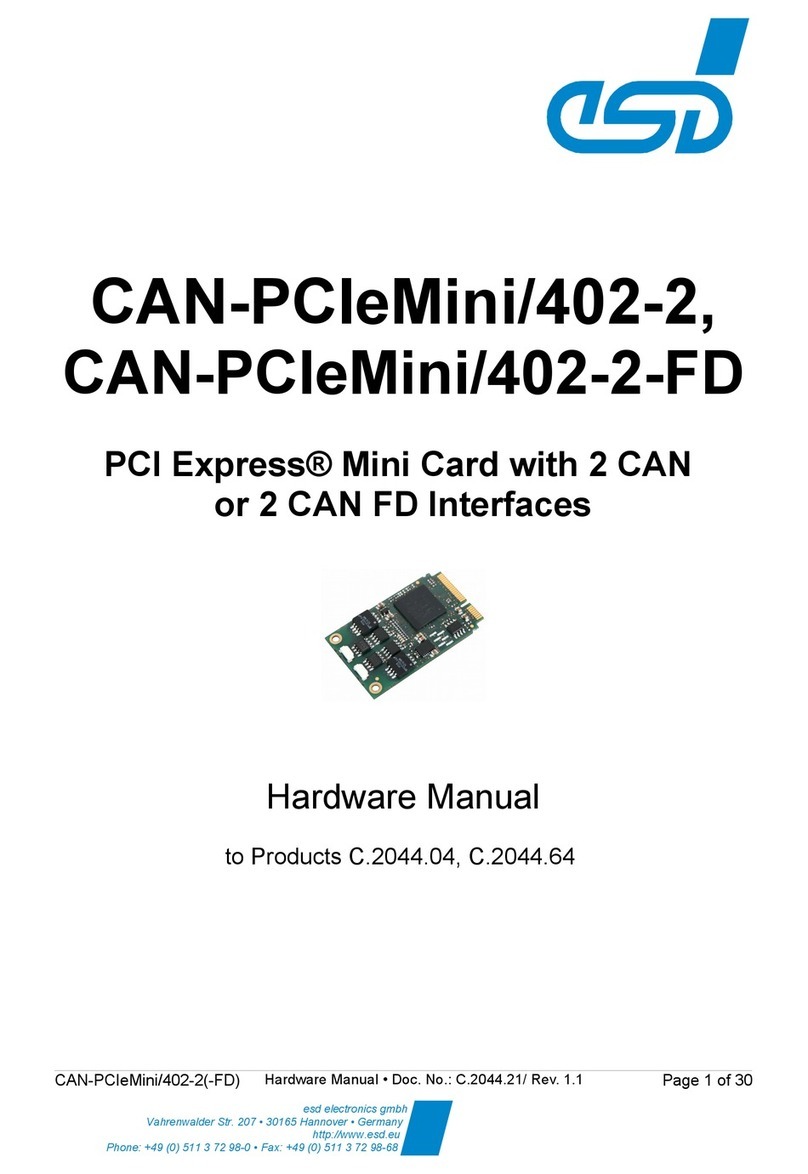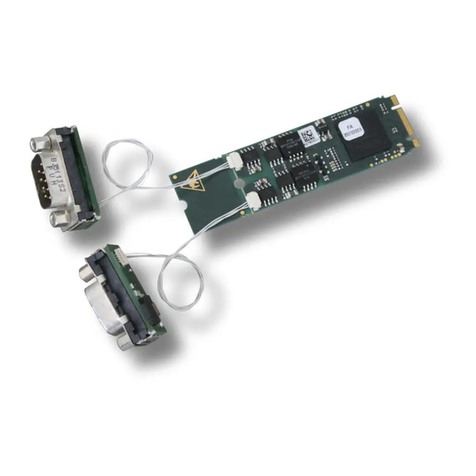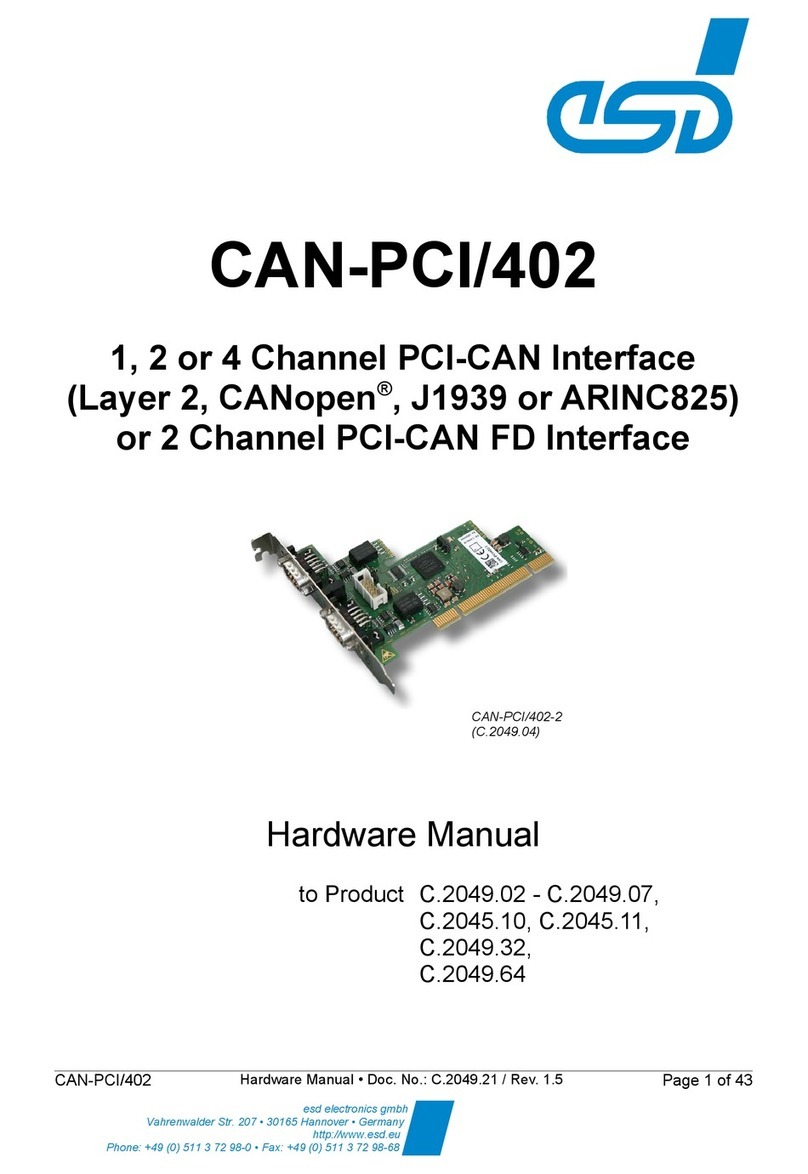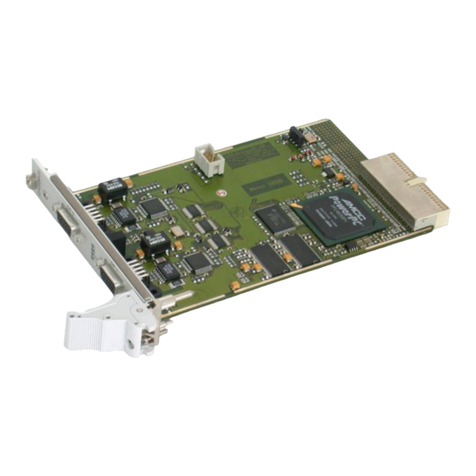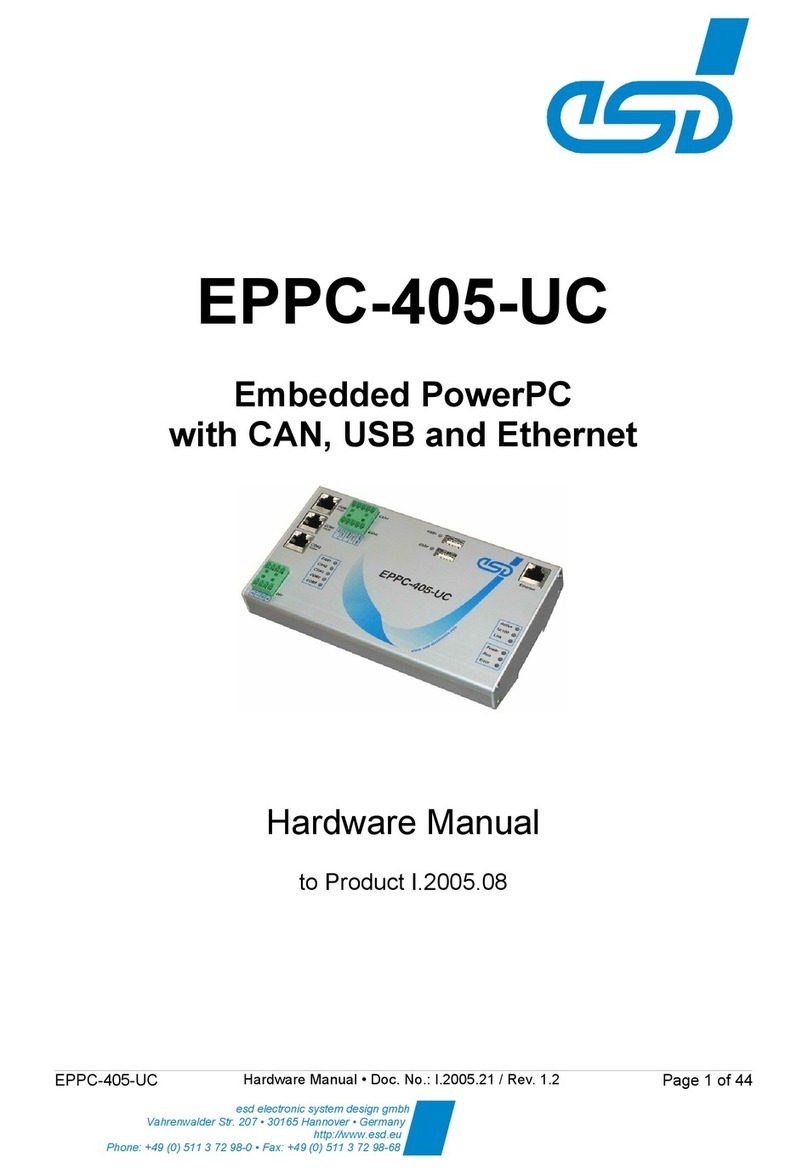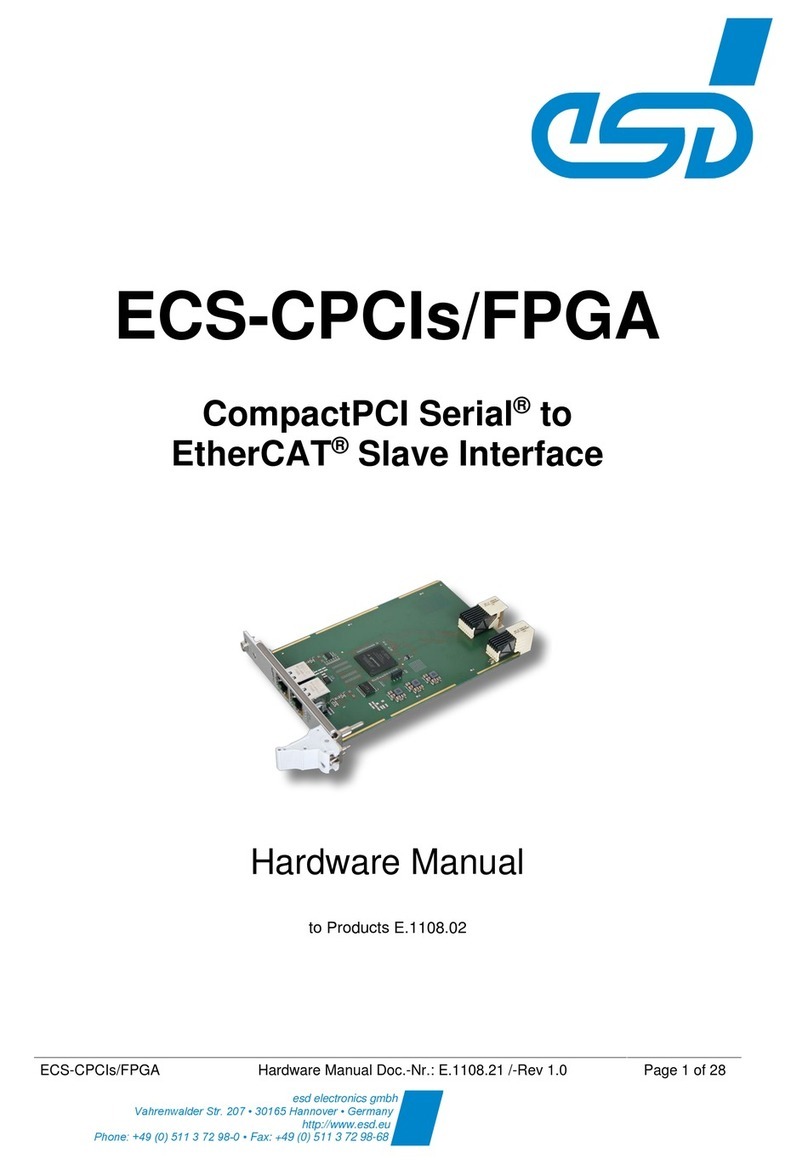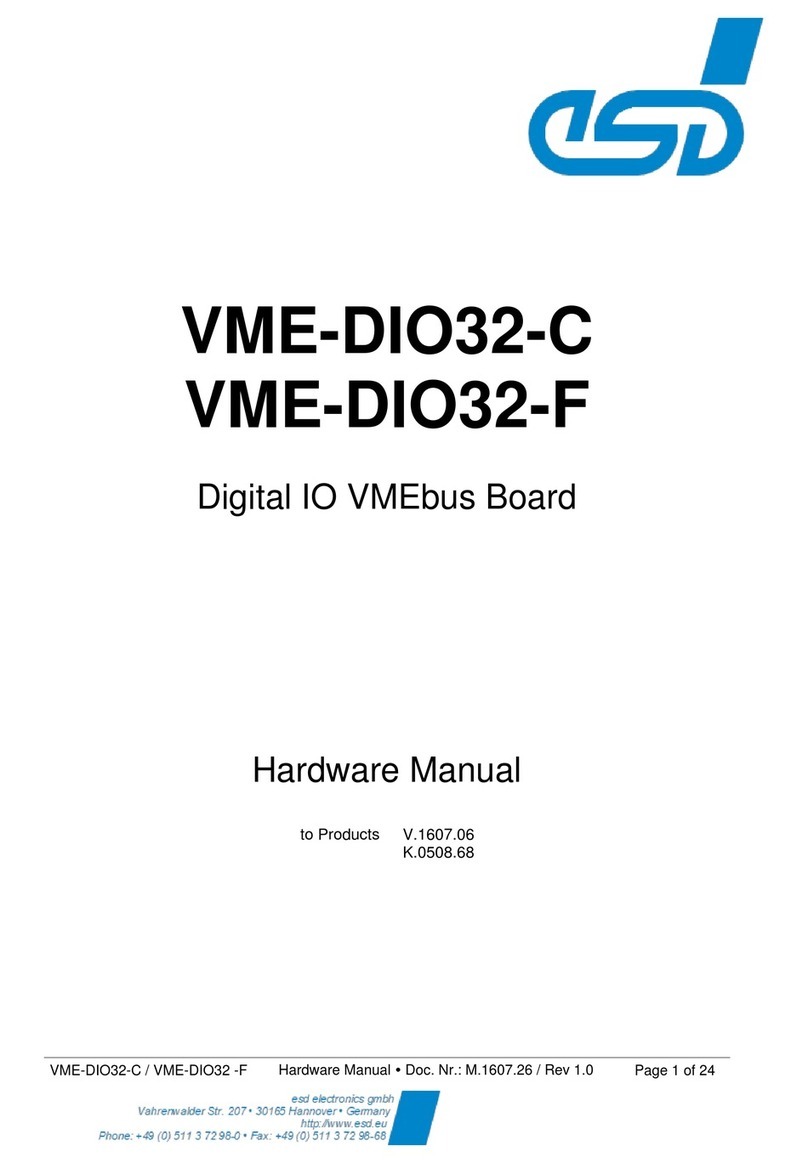Table of contents
Safety Instructions........................................................................................................................... 5
1. Overview...................................................................................................................................... 9
2. PCB with Connectors..................................................................................................................11
2.1 PCB Top Layer View with Connectors and LEDs.................................................................11
2.2 PCB Bottom Layer View with LED and Coding Switches.....................................................12
3. LEDs.......................................................................................................................................... 13
3.1 Front Panel LEDs.................................................................................................................13
3.1.1 LED Indication of the TriColor LEDs 0-4......................................................................13
3.1.2 Ethernet LEDs (ETH1, ETH2) ....................................................................................13
3.2 CON Activity (LED 1222) and USB PW (LED1230) ..........................................................14
4. Hardware Configuration..............................................................................................................15
4.1 Coding Switches.................................................................................................................. 15
5. Hardware Installation.................................................................................................................. 16
6. Technical Data............................................................................................................................18
6.1 General Technical Data........................................................................................................18
6.2 CPU and Memory................................................................................................................19
6.3 Ethernet Interface................................................................................................................19
6.4 Serial Interfaces...................................................................................................................19
6.4.1 I²C Interface................................................................................................................20
6.5 USB - USB Host Interface....................................................................................................20
6.6 CON - USB Device Interface................................................................................................20
6.7 PMC Interface...................................................................................................................... 21
6.8 XMC Interface .....................................................................................................................21
6.9 Digital In-/Outputs P4...........................................................................................................21
6.10 Digital In-/Outputs P6.........................................................................................................22
6.11 SATA.................................................................................................................................. 22
6.12 eal-Time Clock ( TC)......................................................................................................22
6.13 Health................................................................................................................................ 23
6.14 Memory - Interface.............................................................................................................23
6.15 Software Support...............................................................................................................23
6.16 Firmware License...............................................................................................................24
7. Connector Assignments.............................................................................................................. 25
7.1 USB, (USB Host, X1200).....................................................................................................25
7.2 CON, (USB Device, X1220).................................................................................................25
7.3 Ethernet ETH0, ETH1..........................................................................................................26
7.4 PMC Connectors..................................................................................................................27
7.4.1 PMC P1 Connector.....................................................................................................27
7.4.2 PMC P2 Connector.....................................................................................................28
7.4.3 PMC P4 I/O Connector................................................................................................29
7.5 XMC - P5............................................................................................................................. 31
7.6 XMC - P6............................................................................................................................. 32
7.7 JTAG X900.......................................................................................................................... 33
7.7.1 XMC-CPU-ADAPTE -BDI..........................................................................................33
7.7.2 XMC-CPU-ADAPTE -NXP.........................................................................................34
7.8 Debug Interface X400 and JTAG FPGA Interface X1900.....................................................35
7.8.1 XMC-CPU-ADAPTE -FPGA ......................................................................................35
8. Description of the Units..............................................................................................................36
8.1 CPU..................................................................................................................................... 36
8.1.1 Access Addresses from CPU to FPGA .......................................................................36
8.2 FPGA...................................................................................................................................37
XMC-CPU/T10 Hardware Manual • Doc. No.: V.2030.21 / ev. 1.2 Page 7 of 41
